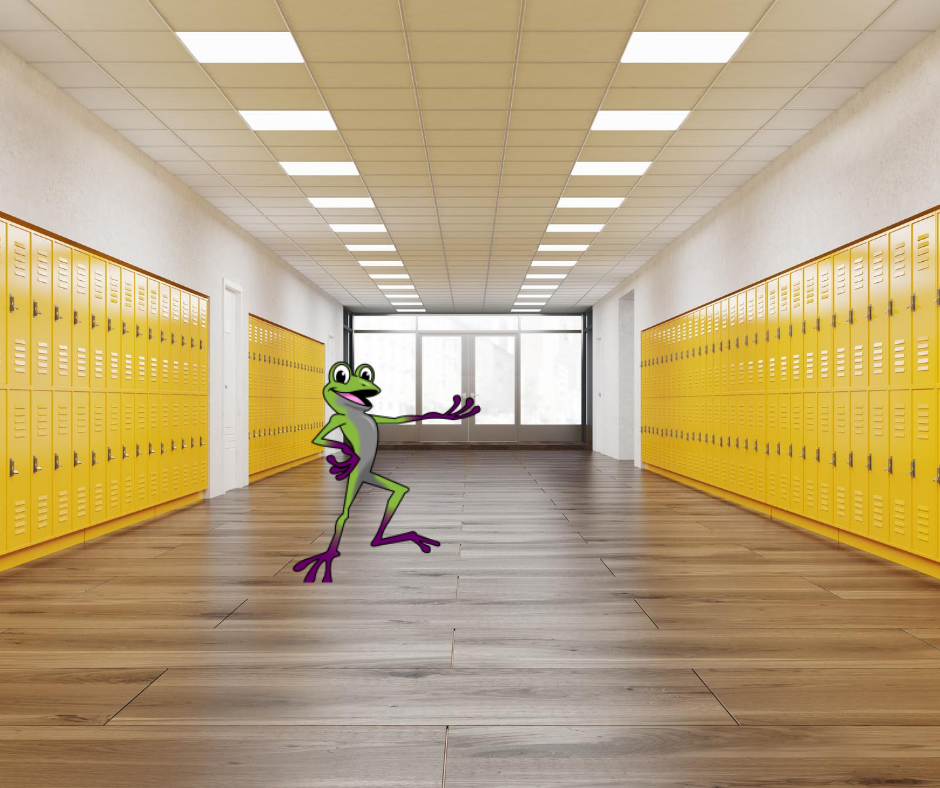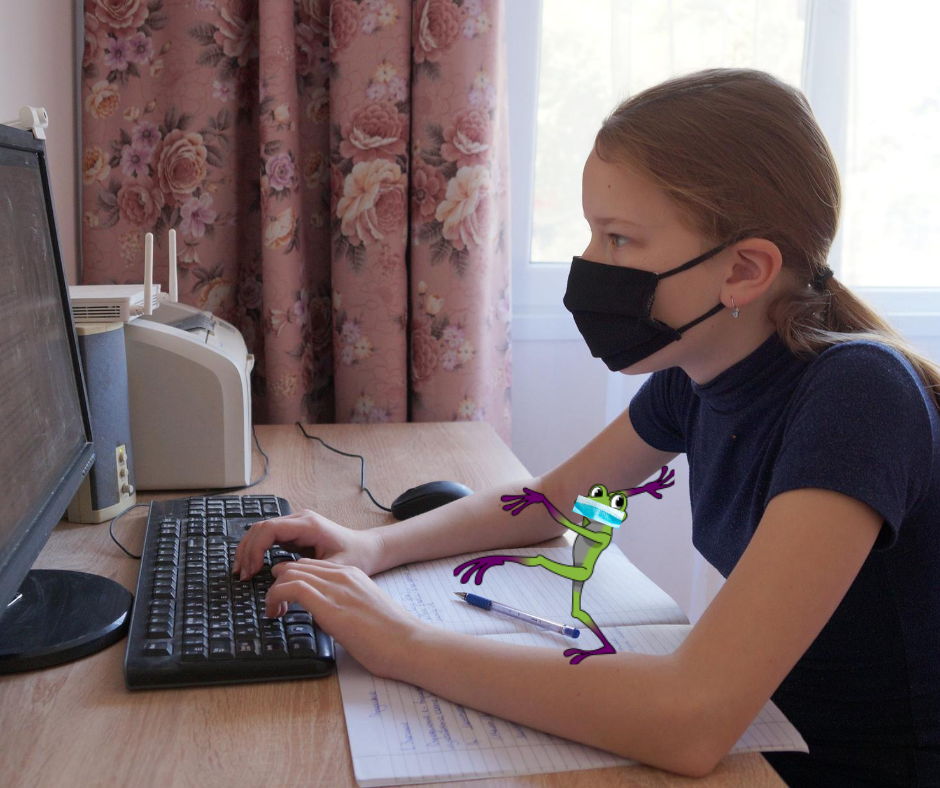
Hi everyone! As you may have guessed, I have not been able to hop around the world as much during these unprecedented times. However, it has been so rewarding to focus on using my translation and interpreting skills right here at home!
Due to COVID-19, many industries need help now more than ever. The healthcare industry might be the first industry that comes to mind, and it certainly does need our help. However, there is another very important industry facing lots of challenges with interpreting – the education system!
Schools all over the country are using distance learning to varying degrees, meaning big changes for both students and teachers.
Distance and hybrid learning is an even bigger challenge for students who rely on an interpreter. What does a classroom or virtual classroom look and feel like in 2020 for interpreters and the students they work with?
Today, I am hopping over to a local elementary school to work alongside their interpreter, my friend Maria, to learn what these new times mean for her job and daily tasks.
Terpii: Hi Maria!
Maria: Hi Terpii! I am just setting up some activities for our Monday hybrid learning group, but I am ready to chat.
Terpii: Hybrid learning, what is that? Actually, before you answer, can you just fill me on everything, please?! I want to know about how your job has been impacted and how your day-to-day has changed due to COVID-19.
Maria: Well, let me start at the beginning. Last spring, when COVID-19 first caused us to quarantine, our school immediately started doing virtual learning. Teachers and students would meet on a video-conferencing platform like Zoom or Google Classrooms, which allow students to log in and see the teacher and their classmates.
Terpii: That transition must have been very difficult!
Maria: Yes! As you can imagine, teaching and learning remotely was a big change for all of us. We are so used to seeing each other every day! So that part was hard, but I also had to re-learn how to help each of my students. Aside from our Limited English Proficient (LEP) students, we also have many deaf and hard-of-hearing children. Interpreting was easier in person because I was familiar with learning styles, limits and comprehension levels of each student. I knew which students needed extra assistance, but a new set of needs arose with distance learning. Many students could not read lips as well remotely, or their internet connection was not fast enough for them to understand the instructions clearly. So, the students and I were again forced to adjust how we interacted.
Terpii: And now you are getting new students who you have not met before!
Maria: Right! I will do all I can to ensure they feel comfortable enough to ask me for extra help if they need it. Some parents do not understand English and can’t help with homework, so if the students do not trust me yet, they might be too shy to ask for further clarification. Once they feel comfortable though, they can ask me for anything they need. I’m just hoping that happens quickly even though we will be teaching mostly remotely.

School will be much different this year due to COVID-19. Terpii is mask-free here, visiting a school on a day kids are learning remotely.
Terpii: So, when you are not teaching virtually, there will be hybrid learning?
Maria: Right, again! Our school has students in the classroom on a rotating schedule. For example, half the students come to school on Monday and Tuesday and then they have distance learning Wednesday through Friday. Meanwhile, the other half of the students will have virtual learning Monday through Wednesday and then come to school on Thursday and Friday. Sanitation is a priority, so everything will be sterilized on Wednesdays and Saturdays. Many concerns have been raised about safety, so we are doing our best to reduce risks, especially when it comes to family members of students who are susceptible to COVID-19.
Terpii: On that note, what kind of safety procedures will be in place when students come into school?
Maria: Students will have their own masks and we will have hand sanitizer readily available in the classroom. We will also have a full stock of cleaning products so we can sanitize desks etc. throughout the day. In addition to all this, we will do our best to encourage and enforce social distancing. One of the biggest changes is we will keep children in groups, the number of children in each group depends on class size, in what has been described as “cohorting.” This change is to limit interactions and make it easier to contact trace in the event a child tests positive for COVID-19. Also, doors will remain propped open to limit contact, water fountains are taped off and lunchtime will look very different. The days of squeezing next to each other at a cafeteria bench are gone. Children will eat snacks and lunch in the classroom. I’ve heard that some schools will have ‘grab and go’ tables set up so that children can eat in ‘common’ areas.
Terpii: I bet it will be hard to keep elementary school kids from taking off their masks and social distancing.
Maria: Yes, that is indeed one of our concerns. We will be spacing the desks six feet apart, but socialization is also so important for children – especially when it comes to our LEP students, who again get to test out their English skills around peers, rather than being at home and speaking their native language. I am sure the kids will be doing their best to run around and break any distancing rules, but we will do our best to monitor that. It is important to keep in mind that there will be designated “mask breaks.” This will happen when the children are at least six feet apart and at recess. Also, young children often mimic what they see, so we are hopeful that if everyone is wearing a mask, they will adjust to the “new normal” and follow suit.

Terpii will be helping students all year, either in school or at home when they are distance learning.
Terpii: And for the days when you do virtual learning, how do you prepare for that?
Maria: Well, luckily, I have a computer with a webcam and an area set up to work remotely. I like to hang a sheet behind me so there’s nothing to distract the students. My family knows not to come into the room while I am working, so there are no distracting sounds, either. The other teachers and I have reached out to families letting them know to contact us if they need any help setting up virtual learning. We have talked a few families through the set up over the phone already. Some students do not have computer access, so we file petitions through the school to get loaners. We do our best to make sure every student is prepared and confident heading into the new school year.
Terpii: Sounds like your day-to-day has changed a lot!
Maria: In some ways, things have totally changed, seeing as how virtual classes are so different. In other ways, my job has not changed too much. I still listen to the teacher and relay the information the best I can. It is just done through a screen now. I will still be checking in on students who need my assistance to make sure they are on track. Every student has a different comprehension level, so we want to make sure they are all being accommodated.
Terpii: Thank you so much for all this information Maria! Please let me know if there is anything I can ever do to help out. You are making such a positive difference in so many lives.
Maria: Thank you, Terpii!
And there you have it, friends! Times are definitely changing, but luckily, we have so many amazing interpreters making sure every student is put in the best position to succeed! Until next time!






Comments are closed here.